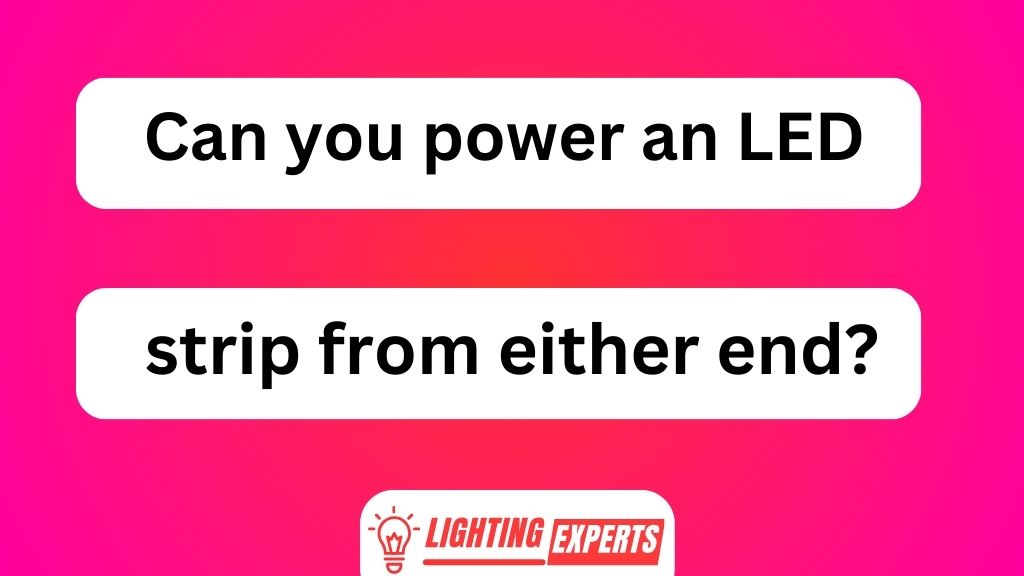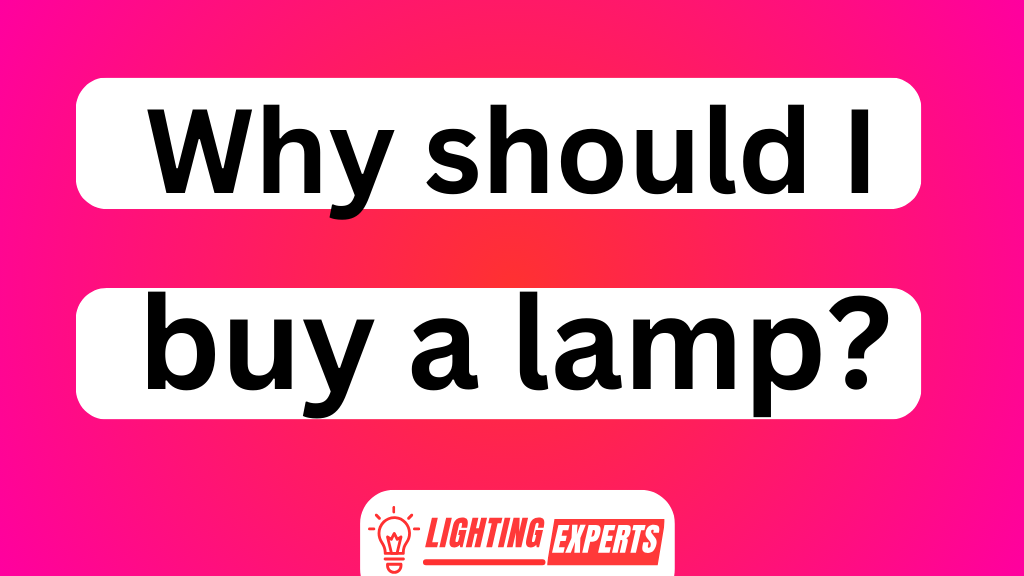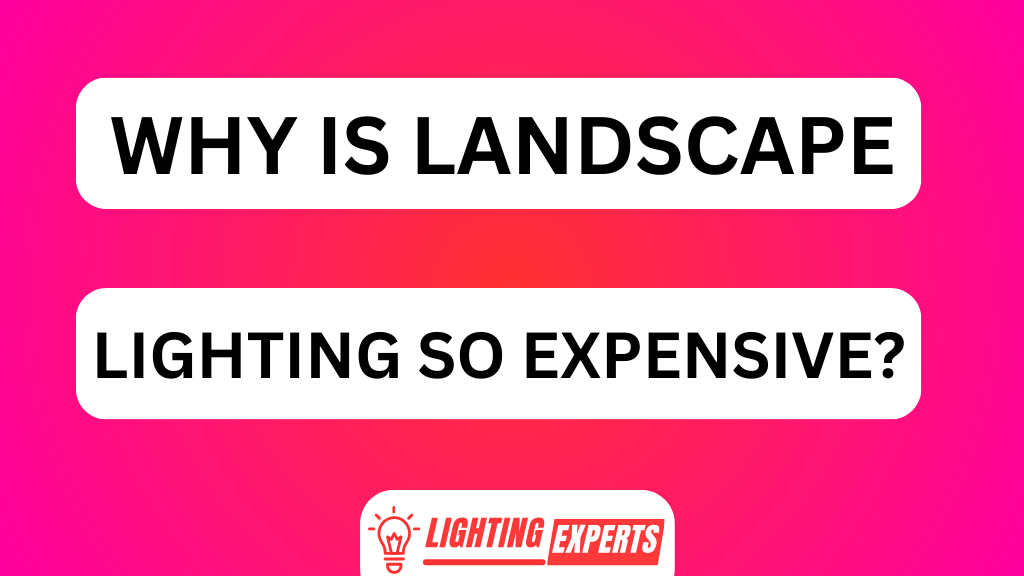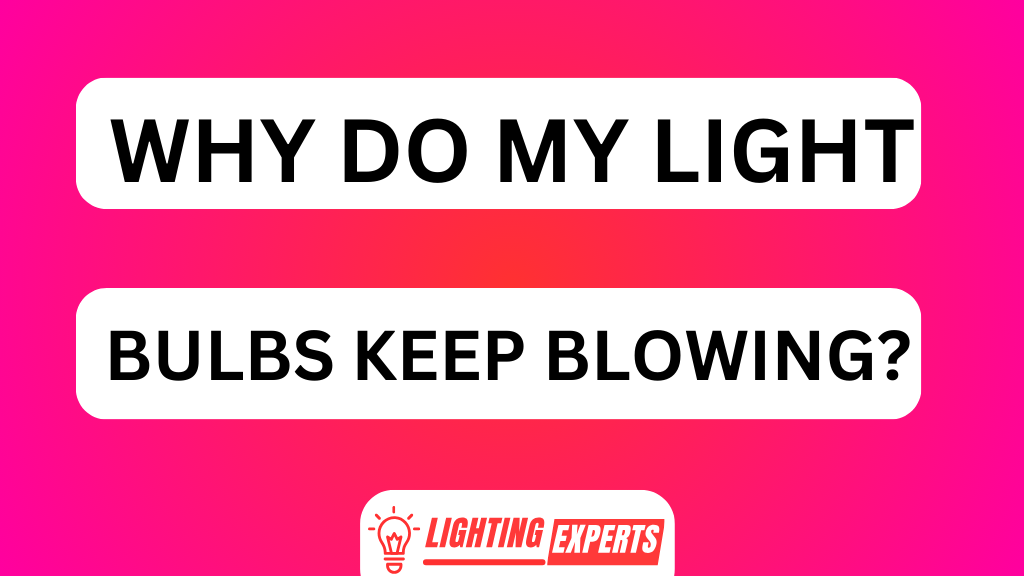Are you curious about the possibilities of powering an LED strip from either end?
Join us as we delve into the world of LED strip power methods.
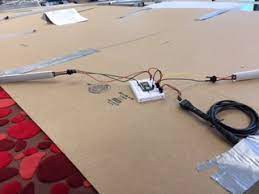
In this article, we will explore whether it is feasible to connect power to an LED strip from both ends.
We will analyze the pros and cons of this approach, provide tips for effective powering, and address common challenges that may arise.
So sit back, relax, and let’s shed some light on this illuminating topic together.
Key Takeaways of Can You Power an LED Strip From Either End
- Dual power supply allows for powering the LED strip from either end.
- Dual power supply increases brightness and reduces voltage drop along the strip.
- Longer maximum run length is achievable with a dual power supply.
- Complex installation and higher cost are disadvantages of using a dual power supply.
Powering LED Strips: Exploring the Options
You can power an LED strip from either end using a suitable power source.
When it comes to powering LED strips, there are various options to consider. One important factor is voltage regulation, which ensures that the LED strip receives a consistent and stable voltage supply. This helps prevent any fluctuations in brightness or damage to the LEDs.
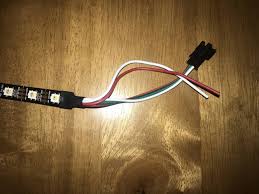
Another consideration is power distribution, which involves evenly distributing the power across the entire length of the LED strip. This is crucial for maintaining uniform lighting throughout the strip.
By implementing proper voltage regulation and efficient power distribution techniques, you can ensure optimal performance and longevity of your LED strip.
It is essential to carefully select the right power source and employ appropriate installation methods for reliable and effective operation.
Understanding LED Strip Powering Methods
When it comes to powering LED strips, there are several key considerations that need to be addressed.
One of these considerations is whether to use a single power source or multiple sources for the strip.
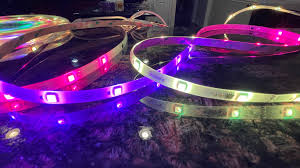
Another important factor to consider is voltage drop, as longer strips may experience a drop in voltage along their length.
Lastly, powering a longer strip may require careful planning and calculations to ensure that the strip receives adequate power throughout its entire length.
Single Vs. Multiple Sources
To power an LED strip from either end, it’s important to consider whether a single or multiple sources will be more efficient. When deciding on the best approach, keep in mind these three key factors:
- Power Distribution: Using multiple power sources allows for even distribution of power along the entire length of the LED strip, reducing the risk of voltage drop and ensuring consistent brightness.
- Redundancy: Implementing multiple power sources provides a backup option in case one source fails. This can prevent complete loss of illumination and ensure uninterrupted performance.
- Flexibility: With alternative power options such as battery packs or solar panels, using multiple sources gives you greater flexibility in terms of where you can install your LED strip and how you can power it.
Considering these factors, it becomes clear that utilizing multiple power sources is often a more efficient choice for powering LED strips. However, before making any decisions, it’s essential to also evaluate voltage drop considerations…
Voltage Drop Considerations
Considering voltage drop considerations, it’s crucial to evaluate the length of the LED strip and the wire gauge you plan to use.
Voltage drop occurs when there is a decrease in voltage along the length of the LED strip due to resistance in the wires. To mitigate this issue, power injection techniques can be employed.
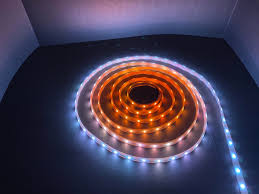
These techniques involve adding additional power sources at regular intervals along the LED strip to compensate for voltage drop. By strategically placing power injections, we can ensure that each section of the LED strip receives sufficient voltage for optimal performance.
It is also important to select an appropriate wire gauge that can handle the current required by the LED strip without significant voltage loss.
Proper evaluation and implementation of voltage drop mitigation and power injection techniques are essential for maintaining consistent brightness and preventing dimming or flickering in long LED strips.
Powering Longer Strip
It’s crucial to strategically place power injections along the length of a longer LED strip to ensure consistent brightness and prevent dimming or flickering. This is especially important when dealing with longer LED strips, as they require efficient power supply options.
Here are three key considerations for powering a longer strip:
- Power injection points: To maintain uniform brightness, it’s essential to add power injection points at regular intervals along the strip. These injections provide additional power to compensate for voltage drop over distance.
- Adequate wire gauge: Using a thicker wire gauge helps minimize resistance and voltage drop, ensuring efficient power delivery throughout the strip.
- High-quality power supply: Opting for a reliable and high-capacity power supply ensures stable current flow, reducing the risk of dimming or flickering issues.
Can You Connect Power to an LED Strip From Both Ends
When it comes to powering an LED strip, one question that arises is whether it’s possible to connect power to the strip from both ends.
This discussion will explore the concept of dual power supply for LED strips and its implications.
We’ll also delve into voltage drop issues that may arise with this configuration and discuss various wiring options available to address these concerns.
Dual Power Supply
You can power an LED strip from either end using a dual power supply. This method offers several advantages over single-end power supply options.
Here are three reasons why a dual power supply is beneficial for LED strips:
- Increased brightness: With dual power supplies, you can distribute the voltage evenly across the entire length of the strip, resulting in consistent and brighter illumination.
- Reduced voltage drop: By powering the LED strip from both ends, you minimize voltage drop along its length. This ensures that all LEDs receive adequate voltage for optimal performance.
- Longer maximum run length: Dual power supplies allow for longer runs of LED strips without compromising brightness or performance, making them ideal for large installations.
However, there are some disadvantages to consider when using a dual power supply:
- Complex installation: Setting up a dual power supply system requires additional wiring and connections, which may be more time-consuming and challenging compared to single-end setups.
- Higher cost: The need for two separate power supplies increases the overall cost of your LED strip installation.
- Space requirements: Dual power supplies take up more space compared to single-end options, so ensure you have enough room available before opting for this setup.
Voltage Drop Issues
The use of a dual power supply can help mitigate voltage drop issues along the length of an LED strip. Voltage drop occurs as current flows through a conductor, and it is influenced by factors such as the length of the strip, the resistance of the wire, and the amount of current being drawn.
Resistance plays a significant role in voltage drop, with longer strips and higher currents resulting in greater resistance and subsequently more voltage drop. To address this issue, one solution is to provide power to both ends of the LED strip using a dual power supply setup.
This helps distribute power evenly across the strip, reducing the impact of resistance and minimizing voltage drop. By implementing this approach, users can ensure consistent brightness levels throughout their LED strip without any noticeable dimming towards its end sections.
Wiring Configuration Options?
To minimize voltage drop issues, consider using a dual power supply setup with power provided at both ends of the strip. This wiring configuration option offers several advantages:
- Improved brightness: By providing power at both ends of the LED strip, you can ensure a more even distribution of voltage and reduce the chances of dimming or uneven illumination.
- Reduced voltage drop: Dual power supplies help mitigate the effects of long runs by minimizing voltage drops that can occur in single-ended setups. This ensures consistent performance across the entire length of the strip.
- Enhanced flexibility: With a dual power supply setup, you have greater flexibility in terms of strip placement and overall design. You can easily extend your LED strip beyond traditional limits without sacrificing brightness or reliability.
Pros and Cons of Powering LED Strips From Either End
There are both advantages and disadvantages to powering LED strips from either end. When it comes to power supply location, using multiple power supplies can provide flexibility and ensure that each section of the LED strip receives sufficient power. This can be especially beneficial when dealing with long or large installations. However, using multiple power supplies can also increase complexity and cost. On the other hand, powering the LED strip from a single end simplifies the setup process and reduces the need for additional components. However, this can result in voltage drop along the length of the strip, leading to decreased brightness towards the end. Ultimately, the choice between using multiple power supplies or a single one depends on factors such as installation size, budget constraints, and desired light output.
| Pros of Using Multiple Power Supplies | Cons of Using Multiple Power Supplies |
|---|---|
| Flexible installation | Increased complexity |
| Ensures sufficient power | Higher cost |
| Effects of Power Supply Location on LED Strip Brightness |
|---|
| Single end power supply: Decreased brightness towards end |
Tips for Powering LED Strips Effectively
Now that we have discussed the pros and cons of powering LED strips from either end, let’s focus on some tips for powering them effectively.
Efficiently powering LED strips is crucial to ensure optimal performance and prevent any power-related issues. Here are three important tips to consider:
- Calculate power requirements: Before connecting your LED strip to a power source, it is essential to calculate the total power consumption of the strip. This can be done by multiplying the wattage per meter by the length of the strip.
- Choose an appropriate power supply: Selecting the right power supply is vital for efficient operation. Make sure to choose a power supply that matches or exceeds the calculated power requirements of your LED strip.
- Troubleshoot power issues: If you encounter any problems with powering your LED strip, check for loose connections, damaged wires, or inadequate voltage supply. Addressing these issues promptly will help maintain efficient operation.
Common Challenges When Powering LED Strips From Both Ends
When powering LED strips from both ends, it’s important to be aware of the common challenges that may arise. One of the key considerations is the powering methods comparison.
There are different ways to power LED strips from both ends, such as using a single power supply or multiple power supplies. Each method has its own advantages and disadvantages, which need to be carefully weighed before making a decision.
Another challenge that often crops up when powering LED strips from both ends is troubleshooting voltage drop. As the current travels along the length of the strip, there can be significant voltage drop towards the end, resulting in dimmer lighting or even complete failure. To tackle this issue, it’s crucial to ensure proper wiring connections and use adequate wire gauge to minimize resistance.
In conclusion, understanding these common challenges when powering LED strips from both ends is essential for achieving optimal performance. By considering different powering methods and troubleshooting voltage drop effectively, you can ensure that your LED strip installation functions flawlessly and provides vibrant illumination throughout its entire length.
Next, let’s explore some best practices for powering LED strips for optimal performance.
Best Practices for Powering LED Strips for Optimal Performance
To achieve optimal performance when powering LED strips, it’s important to follow these best practices.
- Use an adequate power supply: Ensure that the power supply you use can provide enough voltage and current to meet the requirements of your LED strip. Choosing a high-quality power supply will help prevent any fluctuations or drops in voltage.
- Distribute power evenly: If you have a long LED strip, it’s essential to distribute the power evenly along its length. This can be achieved by connecting the power source at multiple points along the strip, rather than just at one end.
- Minimize voltage drop: Voltage drop can occur when there is a long distance between the power source and the LED strip or due to inadequate wire gauge. To avoid this, use thicker wires with lower resistance and minimize the length of wire between the power source and the LED strip.
Frequently Asked Questions
What Are the Different Options for Powering LED Strips?
There are multiple options for powering LED strips, including using batteries or solar panels. These methods provide alternative sources of energy to ensure the LED strip functions properly without relying on a traditional power source.
How Do I Understand the Different Methods of Powering LED Strips?
Understanding LED strip power requirements is crucial for troubleshooting power issues. We learned this the hard way when our LED strip wouldn’t turn on. By analyzing the power source and checking connections, we solved the problem.
Can I Connect Power to an LED Strip From Both Ends?
Yes, you can connect power to an LED strip from both ends. This provides more powering options and allows for even distribution of power throughout the strip, ensuring consistent brightness and performance.
What Are the Advantages and Disadvantages of Powering LED Strips From Either End?
Powering LED strips from either end has advantages and disadvantages. It allows for longer runs and reduced voltage drop, improving brightness and efficiency. However, it requires careful wiring to avoid overloading the circuit.
Do You Have Any Tips for Effectively Powering LED Strips?
When it comes to effectively powering LED strips, we’ve found that using a battery can provide portable and convenient power. Additionally, utilizing solar panels can offer a sustainable and eco-friendly solution.
Conclusion
In conclusion, powering LED strips from either end offers both advantages and disadvantages. While it allows for more flexibility in installation and reduces voltage drop, it can also create challenges such as uneven brightness and potential damage to the LEDs.
To ensure optimal performance, it is crucial to follow best practices such as using the correct power supply and wiring gauge, as well as evenly distributing power across the strip.
So remember, when it comes to powering LED strips, balance is key for a dazzling display that shines bright like a diamond.
